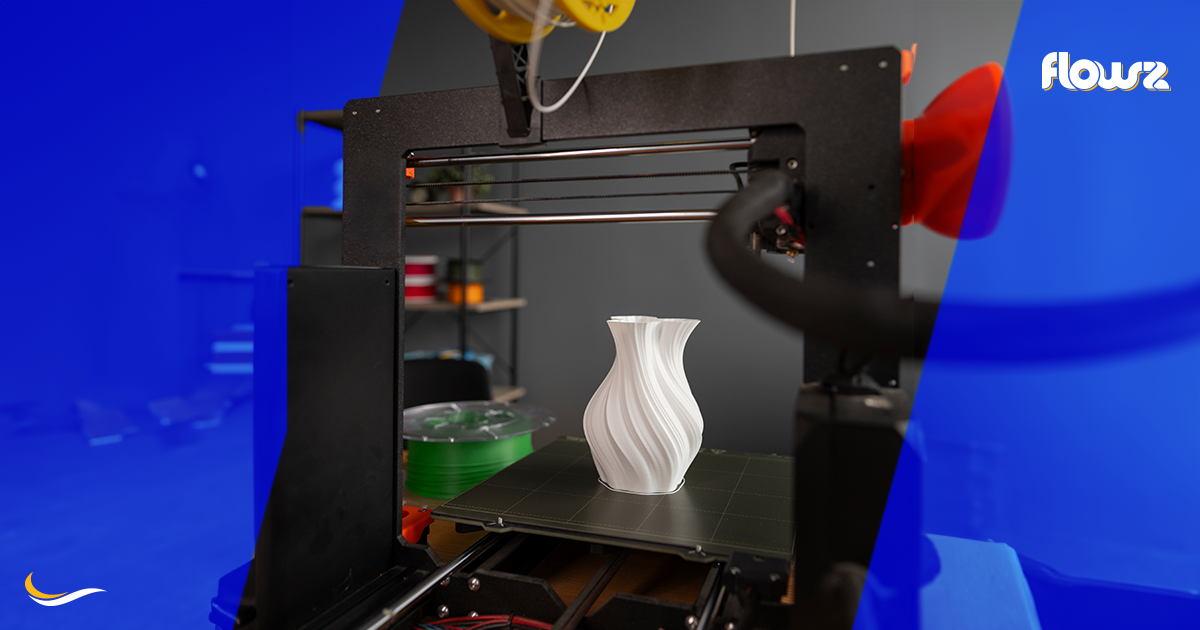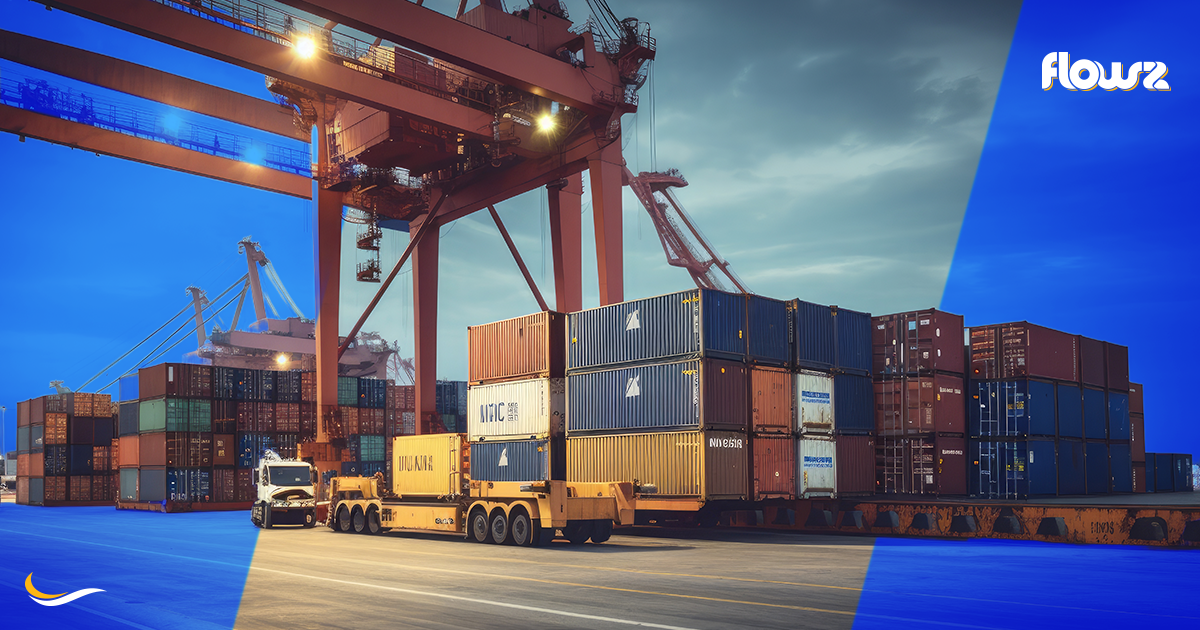Prologue
The future of transportation logistics management remains tentatively poised. It will be shaped by revolutionary transformations with major disruptive technologies like blockchain, IoT, Artificial Intelligence (AI), and autonomous vehicles. However, the transport industry also faces headwinds in the near term with sluggish growth, worsened by inflationary pressures worldwide. With real-time tracking becoming the need of the hour, can outsourcing logistics services to third-party logistics partners provide a competitive advantage? Let’s take a dive into the logistics challenges and trends that will define 2024!
Transportation Trends: Gearing up for 2024
Here are the 5 major transportation trends that are unveiling as you read this!
1. Are Autonomous Vehicles Going to Rule the Roost?

It is the age of automation and it promises greater safety benefits with Automated Driving Systems (ADS). In the future of mobility, driverless cars are a reality.
Self-driving vehicles will progressively incorporate six levels of driver assistance technology, making improvements in the coming years. The six levels range from Level 0, which requires human drivers to do all driving tasks, to Level 5, wherein vehicle ADS executes all tasks.
Level 0 – No Automation: Nill autonomy, the driver performs all driving tasks.
Level 1 – Driver Assistance: Vehicles are controlled by drivers with little driving assistance features.
Level 2 – Partial Automation: Vehicles are armed with automated functions (acceleration, steering, etc). However, driver engagement is required and they have to monitor the environment.
Level 3 – Conditional Automation: Drivers are a necessity but they are now free from monitoring the environment. Nevertheless, they must be on their toes to take control at all times.
Level 4 – High Automation: The vehicle is now able to execute all driving functions under specified conditions. The driver might have the option to take control, though not required.
Level 5 – Full Automation: The vehicle is capable of performing all driving functions under all conditions (even in the absence of a driver).
For instance, Israel has become a hub for $35 billion worth of mobility innovations that intends to reshape the global transportation industry, with hundreds of mobility-related startups trying to solve logistics challenges. And, global vehicle manufacturers are jumping on the bandwagon too!
2. Sustainability

Before the transportation industry seeks to upgrade and build modern infrastructure, lay new railway tracks, and construct new roads, it’s vital that the stakeholders come together to improvise and become sustainable. While other industries have taken baby steps to reduce emissions, the transport sector continues to expand at the expense of fossil fuels.
Without taking major actions to counter this tendency, the climate targets established by international organizations, such as the Paris Agreement, to attain net-zero emissions by 2050 would be almost unattainable.
The regulators and consumers alike are waking up to the dangers of extreme climate and demanding greater sustainability across the transportation sub-segments.

3. Artificial Intelligence - The Backbone of Level 5 Autonomous Vehicles
Pedestrian detection is a key hindrance in Computer Vision and Pattern Recognition since they are freakishly unpredictable when negotiating with road traffic. The key is not necessarily for AI to recognize distinct human features like eyes and beards, but to distinguish a human from another object and understand a pedestrian’s intention.
Will a pedestrian cross the road out of nowhere?
How likely it is for a person to move right (or left) in response to an approaching vehicle?
As per a report, the AI transportation market is projected to reach $3.5 billion by 2023, clocking an impressive growth of 16.5%.
Traffic Management In Mega Cities
Congestion is a major problem in all major cities worldwide. AI can revolutionize traffic management. Coupled with embedded sensors and cameras, large volumes of traffic details can be captured at minimal investments. AI-powered systems can analyze the data and provide commuters with important details such as traffic predictions, road blockages, route optimization options, etc.
For instance, Spanish startup Trucksters has deployed an AI-based long-distance full truckload (FTL) transport service. It arms the FTL trucks with sensors that allow for real-time monitoring. Leveraging its proprietary relay system, Trucksters has reduced the transit time of fleet transport.
To cut it short, AI in transportation is an inevitable trend. And the benefits of outsourcing logistics services in the field of AI are manifold since you have to tap into the talent transcending national boundaries!
4. Mobility as a Service
MaaS (Mobility as a Service) adds value to both commuting as well as cargo transport ecosystems by deploying a single application to access unified mobility options. It also uses a single payment channel instead of multiple ticketing, which is the standard norm till now.
A MaaS operator integrates various transportation modes, like buses, private operators, ride-sharing individuals, and railways on the unified platform interface. A successful MaaS service can also unlock new business opportunities by organizing and operating several transport options, to serve unmet demand.
In simple terms, the whole MaaS concept involves 3 key components:
- Providing a service that focuses on the transport needs of individuals/businesses;
- Providing mobility instead of transport; and
- Providing integration of transport services, payment, ticketing, and data insights.
MaaS has the potential to speed up logistics and this is a major trend to watch out for!
5. Transportation & Blockchain: An Inevitable Marriage!

Scenario 1:
Imagine you are a freight broker who needs to fill a load in a specific pickup location. You have discovered a new carrier who can do the job, but you can't assign it until the carrier is properly onboarded. This situation can be frustrating when you are in a hurry!
Blockchain technology can help you by creating a decentralized network that stores all the necessary records of carriers across the transportation and freight industry. This is almost impossible to fake and can be verified instantaneously.

Scenario 2:
A company wishes to release payment to a shipper as soon as its goods reach its destination. A blockchain-backed smart contract can make it happen.
Supply chains nowadays are extremely inefficient because they rely on paper-based systems or mail which must pass through numerous approval channels, increasing exposure to loss/fraud. Blockchain can completely eliminate all of that. Administrative costs currently account for 20% of the overall transportation costs and the amount of money that can be saved utilizing smart contracts could be mind-boggling!
Blockchain in Trucking Alliance (BiTA) is already leading a global initiative to introduce blockchain into the trucking industry and boost the efficiency of freight movement and ease of payments. The blockchain buzz is only going to get stronger in the years to come!
Logistics Challenges Galore, Opportunities Beneath the Surface?

1. Truckers Shortage - A Result of Work-Life Imbalance?
Picture yourself as an employee who wants to have a good work-life balance. You might want to steer clear of being a lorry driver, according to a study by CBS in late 2020.
The study explored which jobs lead to a poor work-life balance. Of all the employees they asked, 7.6% reported that they frequently or very frequently experience a work-life imbalance. But, for lorry drivers, it was 18%. Vis-a-vis the average of all professions surveyed, truck drivers report a work-life imbalance 237% more frequently.
How autonomous vehicles are looking to fill the gap?
Autonomous vehicles can fuel efficiency by obliterating human drivers. What’s more, one can program these vehicles to dynamically alter pre-established routes and speed, based on informed inputs. These vehicles can also be tracked by logistics coordinators and collect data all across their journey, to further improve operations.
Point in case? Recently, Elon Musk stated that the company’s next-gen vehicle will function “almost entirely in an autonomous mode”.

2. Improving Cybersecurity
Transportation businesses are relying more on technology than ever before. Unfortunately, for cybercriminals, it sounds like Eden’s Garden! Without an effective transportation management system, workers can unknowingly reveal internal information that could lead to serious cyber attacks.
Likewise, without an effective protocol in place, the transportation and logistics staff may not comply with specific measures to prevent such attacks from happening. This is becoming a critical threat as fleets of autonomous vehicles hit the highways.
The Uswitch study reveals that connected cars generate up to 25GB of data per hour. This includes data about the driver, the car, the passengers, and whatnot. To put things in perspective, that is more than the data generated by a Boeing 787!
Here is another chilling fact. Each of the four largest shipping companies (worldwide) has been hit by cybercriminals. Imagine what will happen if global commerce gets disrupted with just a few clicks from a rogue actor!
Way out? Cybersecurity training!
This is the cornerstone of all efforts that a transportation business can make to defend itself from cyber attacks. Reason? Most attacks have an element of social engineering (like emails, texts). Apart from that network segmentation can also help. If networks are segmented into smaller parts, IT managers can boost network performance and improve security.
3. Climate-proofing Transport Infrastructure
Transportation is a major contributor to climate change. In the United States, transportation accounted for 28% of greenhouse gas emissions in 2021. These emissions come from gas to power cars, trucks, ships, planes, and trains. As the risks from climate change escalate, countries need to prepare for rising transport infrastructure costs. For instance, World Bank research estimates that the cost of road maintenance in Africa will increase by 270% in the coming decades as a result of climate change.
How electrification can help?
Transitioning to greener electric vehicles (EVs) is the way to go!
A study from the Our World in Data captures the staggering fall of lithium-ion battery prices, which have declined by 97 percent (yes, you read that right!) since 1991. According to the International Energy Agency (IEA), the global electric car stock mounted a 10 million peak in 2020, a 43% increase from 2019. The IEA report further estimates that the share of electric cars could reach 60% by 2030 in a net-zero emissions scenario.
That has fuelled the mass production of electrified vehicles (EVs), in the past decade. A cleaner and more efficient alternative to conventional vehicles, they are being supported by government policies around the world.
But, what happens if these electric vehicles keep running on electricity generated by dirty fuels like coal? Food for thought?
4. Visibility & Real-time Tracking
For many shippers, having real-time visibility of their freight is a top priority in the supply chain, second only to reducing costs and improving transit speed. Real-time visibility allows businesses to react swiftly to any disruptions that may occur in the supply chain. In the past, shippers could only monitor their cargo when it reached a certain point. But now, live visibility is essential for an effective supply chain.
Visibility also aids the entire supply chain, including the distribution operations. For instance, a delayed shipment can cause production lines to stop in a factory, a shortage of inventory, or a realignment of staffing on the loading docks. It can also reduce the efficiency of other parts of the supply chain.
Can logistics outsourcing help with tracking?
Yes, it can!
Hiring niche logistics coordinators is not a luxury but a necessity in today’s fast-paced world. Veteran logistics experts put you in a commanding position to remote control logistic operations by eliminating risks, and losses, and anticipating disruptions.

Transportation Industry at a Glance
- The revenue in the public transportation segment is projected to reach USD 289.40 billion in 2023.
- The global last-mile delivery transportation market is estimated to grow at a CAGR of 4.8% from 2023 to 2031, reaching USD 291.9 billion by the end of 2031.
- The Transportation Management Systems market will reach USD 44.5 billion by 2032
Applying the Brakes
The logistics industry often grapples with handling the movement of goods from one place to another. With major disruptions and tech advancements in the mix, the industry is looking to iron out logistics challenges by embracing the latter. Though each transportation subsector is affected differently, there is a visible momentum towards logistics outsourcing to achieve greater micro-mobility (or MaaS), automation, electrification, and AI management. Over the long term, these are all promising signs for the sector.






















































































